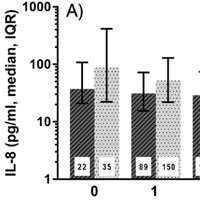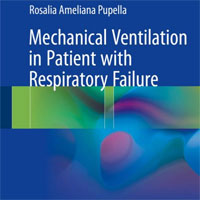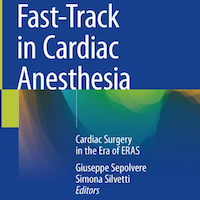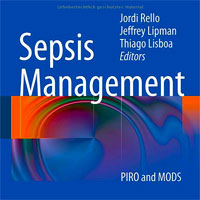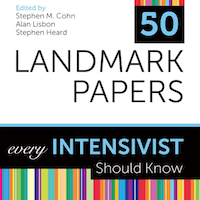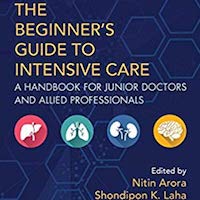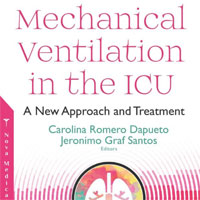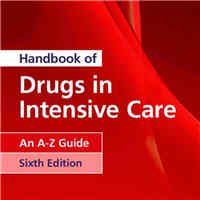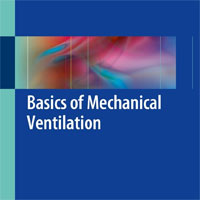Tag: mechanical ventilation
Effect of an ICU Diary on PTSD Symptoms Among Patients Receiving Mechanical Ventilation
Keeping a diary for patients while they are in the intensive care unit (ICU) might reduce their posttraumatic stress disorder (PTSD) symptoms. Among 657 patients who were randomized completed the trial. At 3 months, significant... read more

Integrating host response and unbiased microbe detection for lower respiratory tract infection diagnosis in critically ill adults
Lower respiratory tract infections (LRTIs) are the leading cause of infectious disease-related deaths worldwide yet remain challenging to diagnose because of limitations in existing microbiologic tests. In critically ill... read more
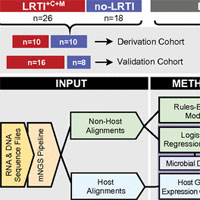
Variation in Identifying Sepsis and Organ Dysfunction Using Administrative Versus Electronic Clinical Data and Impact on Hospital Outcome Comparisons
Variation in the accuracy of claims data for identifying sepsis and organ dysfunction limits their use for comparing hospitals' sepsis rates and outcomes. Using objective clinical data may facilitate more meaningful hospital... read more

Long-Term Outcome after Prolonged Mechanical Ventilation
Among patients receiving prolonged mechanical ventilation at an LTACH, 53.7% were detached from the ventilator at discharge and 1-year survival was 66.9%. Respiratory strength was well maintained, whereas peripheral strength... read more

Impact of Hypophosphatemia on Outcome of Patients in ICU
Hypophosphatemia at admission is an independent risk factor for 28-day mortality in general ICU patients. The cohort included 946 patients with a median phosphate concentration of 0.77 mmol/L. Patients with hypophosphatemia... read more

Noninvasive Ventilation Through the Helmet Can Be Used For Early Mild and Moderate ARDS
Debating data have been published as regards the beneficial or deleterious effect of spontaneous breathing (SB) in comparison to controlled mechanical ventilation (CMV) during acute respiratory failure. Spontaneous breathing... read more
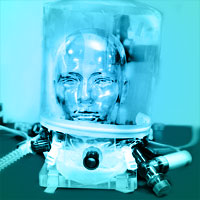
Post-discharge Impact of Healthcare-associated Infections in a Developing Country
The impact of healthcare-associated infections (HCAIs) on in-hospital mortality, morbidity, length-of-stay, and costs has been extensively reported. However, few studies have focused on the follow-up of HCAI-affected subjects... read more
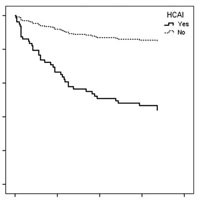
Critical Care Study Guide: Text and Review
Critical care medicine is a dynamic and exciting arena where complex pathophysiologic states require extensive knowledge and up-to-date clinical information. An extensive knowledge of basic pathophysiology, as well as awareness... read more
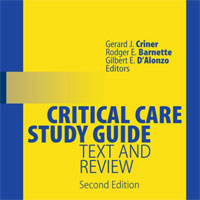
Midazolam Dose Optimization in Critically Ill Pediatric Patients with ARF
This work leveraged available knowledge on non-heritable and heritable factors affecting midazolam pharmacokinetic in pediatric subjects with primary respiratory failure requiring mechanical ventilation, providing the basis... read more
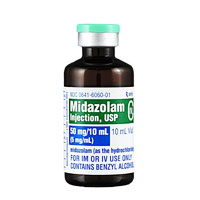
Effect of a Low vs Intermediate Tidal Volume Strategy on Ventilator-Free Days in ICU Patients Without ARDS
In patients in the Intensive Care Unit (ICU) without acute respiratory distress syndrome (ARDS) who were expected not to be extubated within 24 hours of randomization, a low tidal volume strategy did not result in a greater... read more
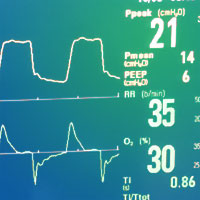
Sedation in the ICU – Good Past – Better Future?
The concepts for good sedation include defining the range of sedation, the need for agents with rapid response that can be easily and rapidly varied in restless and confused patients, various modes of ventilation, continuous... read more
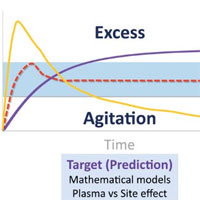
Diaphragm-protective Mechanical Ventilation
Diaphragm dysfunction is common in mechanically ventilated patients and predisposes them to prolonged ventilator dependence and poor clinical outcomes. Mechanical ventilation is a major cause of diaphragm dysfunction in these... read more

Organizational Factors Associated with Target Sedation on the First 48 hours of Mechanical Ventilation
Although light sedation levels are associated with several beneficial outcomes for critically ill patients on mechanical ventilation, the majority of patients are still deeply sedated. Organizational factors may play a role... read more
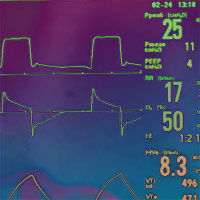
Optimizing Respiratory Management in Resource-limited Settings
This review focuses on the emerging body of literature regarding the management of acute respiratory failure (ARF) in low- and middle-income countries (LMICs). The aim is to abstract management principles that are of relevance... read more
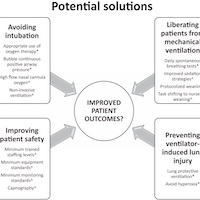
Mechanical Ventilation Enhances Extrapulmonary Sepsis-induced Lung Injury
These data show for the first time that otherwise noninjurious mechanical ventilation can exacerbate acute lung injury (ALI) due to extrapulmonary sepsis underscoring a potential interactive contribution of common events... read more

The Effect of Adhesive Tape vs. Endotracheal Tube Fastener in Critically Ill Adults
The optimal securement method of endotracheal tubes is unknown but should prevent dislodgement while minimizing complications. The use of an endotracheal tube fastener might reduce complications among critically ill adults... read more
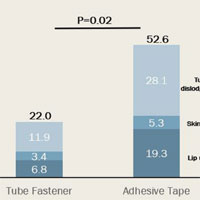
PERFECT Protocol: Volume-based Feeding in Ventilated Adults
Underfeeding in critical illness is common and associated with poor outcomes. Researchers in the UK designed a before-and-after study to evaluate the safety, efficacy and clinical outcomes associated with volume-based feeding... read more

Sedation in ICU patients – Need for Standardized Protocols
A Johns Hopkins-led study on sedation practices in critically ill patients in a resource-limited setting finds that deep sedation, agitation, and benzodiazepines were independently associated with worse clinical outcomes.... read more

Tidal Volume Strategies for those without ARDS
This paper justifies utilizing a higher tidal volume strategy for our patients without primary ARDS/pulmonary disease. This can be very useful. Patient comfort and patient-ventilator synchrony are extremely important. This... read more
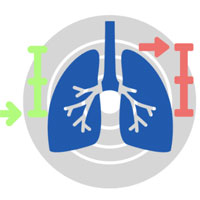
Safety of Patient Mobilization and Rehabilitation in the ICU
Patient mobilization and physical rehabilitation in the ICU appears safe, with a low incidence of potential safety events, and only rare events having any consequences for patient management. Heterogeneity in the definition... read more

ICU Physiology in 1000 Words: The Mean Systemic Filling Pressure
Consider sitting deep within the hull of this cruise ship, ignorant to the outside. A leak is sprung and ocean begins to rush in. Thinking quickly you activate the bilge pump which, appropriately, ejects the ocean outside... read more
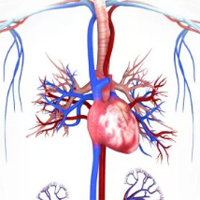
A Prospective Investigation of Interleukin-8 Levels in Pediatric ARF and ARDS
The association of plasma interleukin-8 (IL-8), or IL-8 genetic variants, with pediatric acute respiratory distress syndrome (PARDS) in children with acute respiratory failure (ARF) at risk for PARDS has not been examined.... read more
